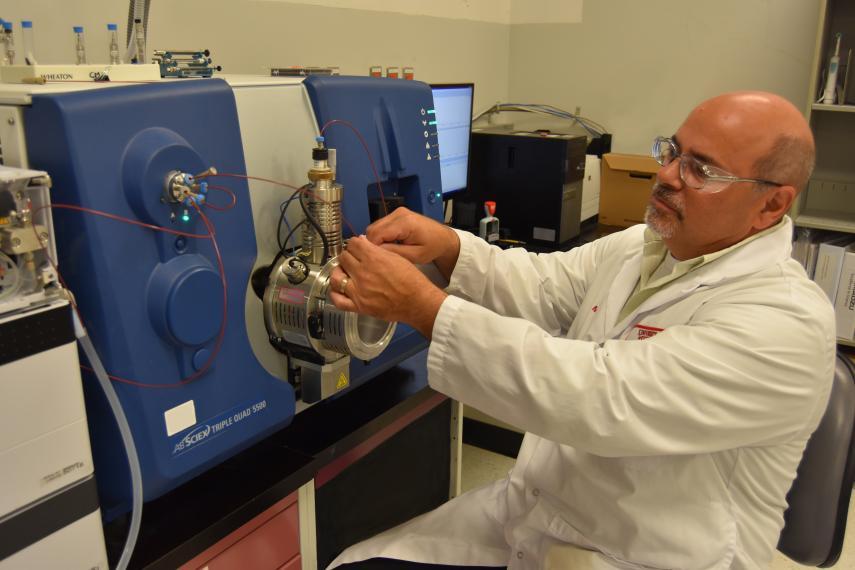Less environmental impact found through new analytical method

Veterinary drugs and pesticides detection in food tested at the U of G Agriculture and Food Lab (AFL) has been improved through a new method that increases the number of detectable compounds in samples, while simultaneously using a more environmentally friendly compound to reduce the impact of volatile emissions.
Perry Martos, Senior Research Scientist and Manager of Chemistry Research and Development at the AFL, worked with Charles Wroblewski, a research scientist, to develop the process – called the “multi-target analyte method” – to improve detection of veterinary compounds in meat, milk and honey while significantly reducing their environmental footprint in doing so.
The development of the new method required six months of extensive research. This research effort allowed the multi-target analyte method to be different than the previous method in that it is far more environmentally friendly and efficient.
Identifying compounds in food is necessary to ensure they are regulated within government standards.
The researchers decided to use methanol in their analytical approach, which is preferable to the current approach that used a far more toxic solvent called acetonitrile. The use of methanol is generally not considered an option for these methods.
“There is a lot of toxic waste that will be avoided by developing the method in a more environmentally friendly way,” says Martos. “Other jurisdictions can borrow from what Ontario is doing.”
Here’s how the multi-target analyte method works.
In food safety laboratories, such as the U of G AFL, researchers analyze samples of food for veterinary drugs and pesticides.
Normally, their compound separation equipment uses acetonitrile to analyze the samples, so the compounds can be detected. These compounds include pesticides, antibiotics, mycotoxins (toxic compounds produced by fungus) and pharmaceutical drugs.
One test can last about 20 hours. Traditionally, testing requires about 1 kg of acetonitrile per analysis.
This all adds up. Food Safety Labs such as AFL can have many analytical instruments. Each instrument they use can generate about 200 kg of acetonitrile vapour a year, which can ultimately become an airborne waste product during analysis of samples.
“We shouldn’t generate kilograms of waste looking for nanogram quantities of compounds,” says Martos.
The new method cuts acetonitrile use by more than half for one step and completely eliminates it from another step. “It wasn’t simple to switch to methanol, but it was worth it.” Methanol breaks down much faster in the environment -- acetonitrile has a half-life of one and a half years, while methanol’s half-life is less than ten days.
In the future, Martos plans to further refine the method to run faster and with even less methanol and even completely eliminate the need for acetonitrile.